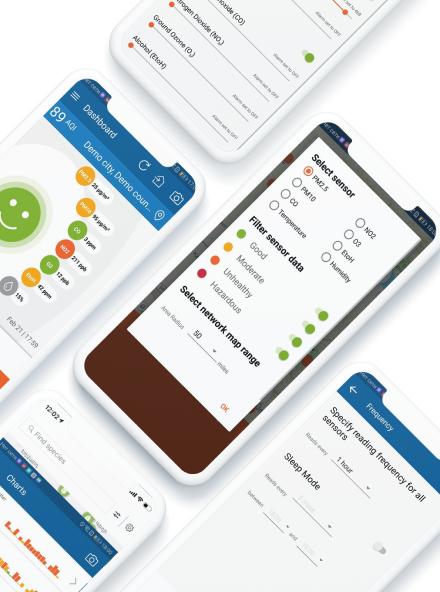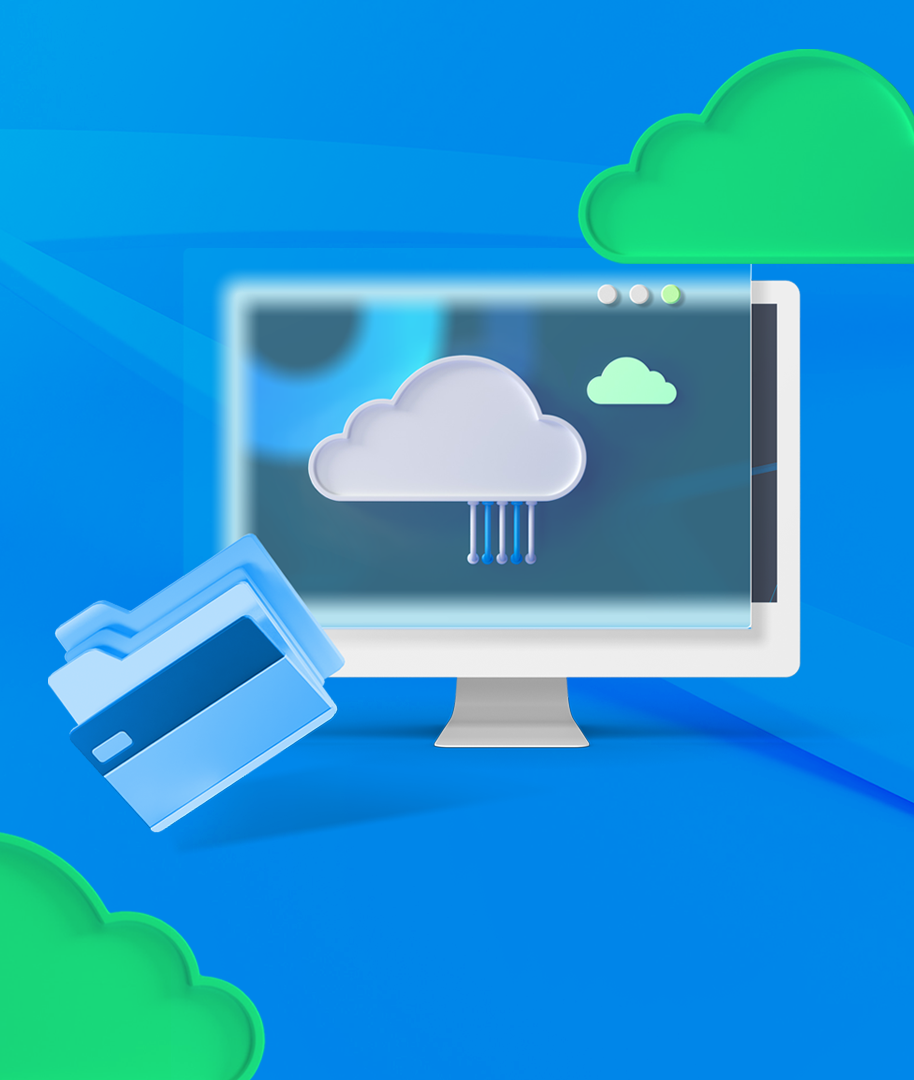
Building Secure and Innovative Fintech Applications: An Insider’s Perspective
29 Apr 2024

In today’s rapidly changing digital landscape, financial technology is transforming the way we manage, invest, and in general, transact with money. Nowadays, the traditional financial institutions, from banks to investment firms, are already embracing the indisputable presence of technology in every aspect of life and adapting to keep pace with tech advancements. Fintech software is revolutionizing the financial services sector, bringing convenience, efficiency, and security.
In this article, I will showcase the intricacies that ensure the balance between innovation and security throughout the development of fintech applications. Together, let’s explore the fintech application development lifecycle, highlighting the key steps, considerations, and best practices that ensure both functionality and security at every stage.
Why are Fintech Applications Important?
The more I work with fintech software, the more I understand their critical importance in the modern world. For one thing, fintech applications highlight and display certain financial data for either a group of users or a specific user to help them make more informed financial decisions, manage their funds effectively, and reach their financial goals. The displayed data can be a calculation of expenses, profits, or future finances. The latter implies a rough calculation of what your financial situation will be if you keep spending or saving at your current rate. So, once you have this information, you can analyze your existing resources and make changes in your current spendings.
I’m currently working on the development of an app that helps users predict their pension. It lets the users know how much their pension will amount to if they keep managing their finances the way they are doing at a given moment. The users are supposed to provide the app with such information as their current income, the expected retirement date, the expenses they have for the future, and depending on the product they choose, the app calculates their future pension.
We know that people are provided with a pension prediction yearly by the government and you may ask, what’s the advantage of this application then? The thing is that regular pension predictions don’t take into consideration the specific, individual details of each user.
Some people may want to have children at some point in their life, or buy a house, or take a sabbatical, a gap year, have a pet - all of these factors are going to affect the pension. No one wants to spend time on the daunting task of calculating all these details to predict the amount of their pension. This is where the app we are working on becomes really helpful. All it takes is for the user to enter all the major financial changes and details that can potentially affect their pension and the app will do the calculation for them.
As you can see, fintech apps are already changing the lives of people, making it easier and more convenient. However, their role doesn’t end there. Fintech software is also transforming the way major banks and financial institutions operate, helping them streamline internal processes, reduce costs, and improve customer engagement. All of this is possible thanks to such factors as automation, data analytics, and improved access to services.
For example, there are applications for green loan assessment that determine the environmental impact and sustainability of proposed projects, thus helping financial institutions make the right decisions and allocate their resources towards environmentally friendly initiatives.
What are the Main Types of Fintech Apps?
Fintech applications cater to a wide range of financial needs and preferences. From mobile banking and payment solutions to insurance services and investment platforms, they offer a solution to every financial problem these days. Here are the main types of fintech applications that I would like to single out:
- Banking Apps
- Insurance Apps
- Investment & Cryptocurrency Apps
- Budgeting Apps for Financial Analysis and Predictions
- Digital Wallet Apps
So, if you have decided to build any of these applications for your business and for your customers, then you are in the right place. I’ll now walk you through the main phases that lead you to achieving the best results in your fintech mobile app development journey.
How to Choose the Right Tech Stack for Fintech Mobile App Development?
First, we need to understand the purpose of the app and the problem that it aims to solve. If it is more focused on data science, AI, ML, and needs relevant integrations, then Python is the go-to choice. It has powerful libraries, like NumPy, Pandas, etc., that make solving AI and ML integration issues seamless and easy.
A problem that I have encountered in my experience is that often many fintech mobile apps and projects that come to us have a certain type of legacy system which has been there for a while. So, we have to integrate the new software with it. In such cases, the tech stack choice may be dependent on the type of legacy software too.
For example, in our current project, we were planning to use Python only for a small application within the project that would only be responsible for making calculations. Why Python? The reason for choosing this language was the fact that the data scientists working on the project had already been using Python. In this case, Python was the logical choice for us.
So, after working for a while with Python, we gradually noticed a shift in our resource allocation, with an increasing emphasis on Python. Many tasks were being delegated to Python. As a result, currently, we are using Python for the major part of the development of this project.
Let’s now see what’s beyond the backend technology choice. After you choose the backend language, you also need to choose the framework that goes with it. In our case we are using FastAPI.
Another crucial factor for choosing the right tech stack is the size and volume of your project. Do you want to develop a large-scale project/application right away or is it going to be a rapid prototype at first? Do you want to build an MVP and only then get deeper into the project?
It should be noted that in this context, FastAPI is way more convenient than Django because it allows you to start from scratch, from the small parts of the project. You build a compact application and make sure it works properly then scale it up and turn it into a more powerful tool. This is why we also chose FastAPI for our current project.
When it comes to frontend development, there is a lot to choose from. If you are on a tight budget and want to build an MVP, it’s better to choose a multi-platform programming language. You can choose, for example, Flutter or React Native, and using the same resources, get an application that is compatible with both iOS and Android devices. Moreover, nowadays Flutter even allows you to build a web application in the future. So, you get all the solutions with the help of a single programming language. This saves you both time and money.
Now let’s quickly discuss the choice of the database. Since most modern databases come with robust security systems, your choice comes down to the type of data you need to store. There are SQL, NoSQL, and Blob Storage databases where you can store files. Standard types of data are best to be stored in structured databases, such as PostGreSQL or MySQL. Unstructured datasets can be stored in NoSQL databases, such as MongoDB. Files are stored in cloud platforms, for example, AWS has the S3 bucket where you can store user-related files and documents securely.

Integrating Security
Security is paramount in fintech, where sensitive financial data is involved. Here are some security measures to consider:
- End-to-End Encryption: Implement end-to-end encryption to secure data transmission between the app and servers. This ensures that even if intercepted, the data remains unreadable. This is done by your DevOps team.
- Biometric Authentication: Enhance user authentication with biometric features such as fingerprint or facial recognition. These methods help improve the robustness of conventional passwords. This is the responsibility of the frontend team but the backend specialists still need to handle it to ensure consistency.
- Secure APIs: Design APIs with security in mind, using standards like OAuth 2.0 for authorization and HTTPS for encrypted communication.
Very often our partners are not even aware of all the security practices but we make sure that we implement them accurately, timely, and at every stage of the development process. All those security practices are, so to say, by default an ingrained part of our software development processes.
Backend System
To ensure the smooth operation of fintech applications, you need to have a robust backend system. Since we have already discussed the backend tech stack selection criteria, let’s now have a look at the main factors that make a strong backend system.
- Server Setup: Server setup involves setting up cloud-based solutions like AWS or Azure. This includes not only the live but also development and testing environments which are essential in the development lifecycle.
- API Development: This is the main part of software development. Design RESTful APIs that are well-documented and follow the best practices. We use frameworks like FastAPI, Django, and Flask.
- Database Design: Ensure efficient database design with normalized schemas to maintain data integrity. Implement techniques like indexing for fast retrieval of data. Here is why this is important: let’s say you have already chosen the database, and it is PostgreSQL and you use it to organize your data. It will then help you know and easily access your user data or any other type of data you store there. In other words, it helps you distribute the data for better management and efficiency.
What’s the Role of AI and Machine Learning in Fintech App Development?
Let’s now slightly deviate from the too technical course of our article and look at the use of current major trends, AI and ML, in fintech app development. Here are a few use cases that I consider important for most financial software when it comes to the integration of AI and ML solutions:
- Personalized Financial Insights: You can use ML algorithms to analyze user spending patterns and offer personalized budgeting tips or investment suggestions. This helps improve financial literacy and of course, provides insights into how you can manage your finances in a smarter way.
- Fraud Detection: Implement ML models for real-time fraud detection. These models can learn from historical data to identify suspicious transactions and flag them for review. Fraud detection is especially useful for banking apps as it helps detect fraudulent transactions and reject them.
- Automated Investment Advice: It’s possible to develop robo-advisor features that provide automated investment advice based on user goals, risk tolerance, and market conditions. For example, you can have an app where the user enters his desired income for the future and the tool provides insights into the case, on how to earn that much income, what the risk factors are, etc.
Seamless Payment Experiences
Seamless payment experiences are essential for boosting user satisfaction and driving conversions within digital applications. Here are a few points I’d like to highlight for the development and integration of secure payment methods.
- Payment Gateways: Integrating secure payment gateways like Stripe, ensure seamless transactions and safe handling of sensitive card information.
- E-Wallets: Offering in-app e-wallets for users to store funds and make quick transactions within the app, provides them with flexibility and convenience. It’s important to ensure that the e-wallet is secured with features, like two-factor authentication. In my practice, we have also done an integration with Fireblocks for cryptocurrencies to expand payment options and deliver solutions to diverse user needs and preferences.
All these elements together create a seamless and trustworthy payment ecosystem, improving the overall user experience and driving business success.
Testing Strategies for Reliability and Security
Testing and development go hand in hand. This is why as a developer, I cannot overlook the importance of testing, especially in fintech app development.
Every financial product and solution that is being developed needs to be properly tested. There is simply no alternative. People are very sensitive in managing their finances. While small mistakes are acceptable for a fintech app, if you deliver a tool that is full of bugs or takes ages to show calculations, you risk losing customers.
You need to test your app for all possible cases, positive or negative, to ensure that it provides its users with precise information on their finances. Even the financial predictions should be close to accurate.
You need to identify the deviations in your product in order to have an idea about the possible mistakes it is capable of making, to know whether these mistakes are irrelevant or they are going to cost the user an essential loss. Then you need to go back and fix and test again.
Functional testing, for example, makes sure that your app has all the initially expected features and functionalities in place. This includes features like account creation, fund transfers, investment tracking, etc.
Security testing is also of crucial importance. If you skip it, you might end up compromising the security of your users’ activities. Imagine one user being able to access the account of another - doesn’t sound like they are using a reliable tool, does it?
Keep in mind that fintech app users, be they a large financial firm or a regular user wanting to manage their finances, are going to be very skeptical of every digital tool and application that comes their way. So, unless you assure them that your tool is secure and is not going to leak their sensitive information to third parties, you won’t get their trust and loyalty.
So, make sure to conduct penetration testing to identify vulnerabilities in your app's security. This includes testing for SQL injection, cross-site scripting, and other common attack vectors.
When it comes to performance testing, you need to ensure that your app performs well under load. Test for scalability, response times, and resource usage to prevent crashes during peak usage.
Remember that you can have a super powerful application but if it works slowly, no user is going to stick around. For example, if you have several products the calculation of which requires time, you need to work on bringing your app to the most optimal state possible for your users. This means that all the operations of your app should be completed within a reasonable and acceptable timeframe for the user.
Let’s go back to the project I am working on now. If the app took, like, 10 minutes to make a calculation for every user case, none of our users would have the slightest desire to wait that long only to know their pension predictions. This is why speed and performance are crucial in fintech software, or any other software, for that matter.
And finally, you should do user acceptance testing, involving real users to test your app's usability and gather feedback. This helps in fine-tuning and improving the user experience before launch.
Other than these, when you are working in an outsourcing company, it’s vital to involve your client in the whole development and testing process too and get their approval. This applies to financial solutions particularly, because there can be legal details and nuances that you need to know, especially if you are not from the same country.
As developers, we can initiate and be proactive in the development process, but at the end of the day, we still need to discuss and confirm our suggestions with the client. They need to be engaged in all the phases of the development lifecycle. For example, when the need for new features arises halfway through the development process, you need to discuss them with the client before implementing anything. Such cases happen more frequently when working with startups.
Maintenance
As much as we value the importance of testing, things can never be absolutely perfect. There will always be a need for post-development maintenance and support. When you start getting actual feedback from your users, you will have to start making changes in your app accordingly.
Ensuring maintenance for fintech apps is of utmost significance. And it’s always recommended that the same team that developed the app, also does the support or post-development bug fixing. This is because they already know the ins and outs of your app and can easily handle the changes, making the process more efficient, speedy, and productive.

FAQ
How long does it take to build a fintech app?
Depends on the requirements and the type of the product. It can take from 1 to 3 months to build the prototype and then expand its capacity, features, and volume over subsequent years.
Which is preferable for fintech app development: native or cross-platform?
Again depends on the specs of your app. Cross-platform app development can save lots of resources and time, even during the maintenance phase. If your application doesn't have many platform-specific dependencies and requirements then cross-platform development is the better choice. However, if your app is going to have an essential amount of platform-specific features and requirements, then I recommend native development.
What are the most essential features for a fintech app?
I would single out only four features, which I consider to be the lifeblood of any fintech application: proper functionality, speed, reliability, and security.
How important is it for the tech team to be familiar with the financial industry?
Extremely. When you understand clearly what product you are building, what its purpose is, and how the industry works, the development becomes much easier. You become more creative too - you think of interesting solutions that you can apply to the process and enhance the product. You think of general solutions that can work for several different products. Besides, you also understand the industry-specific terms which is a bonus that makes the process simpler and of course, faster.
As a developer, what do you expect from the client to provide you with?
It goes without saying that clear and accurate documentation is the first thing we expect from our partners for successful software development. Getting a demo is also immensely helpful as that’s when they can directly explain the details of the product, its purpose, target audience, etc. We also highly value it when our clients provide us with testable information which we can use later for testing. And finally, it's a no-brainer that any successful collaboration is built on the openness to communication and mutual trust.
What challenges have you encountered while working on fintech projects?
When you start working on fintech projects, gaining financial knowledge can be one challenge. Besides, there is always the need to refresh your memory and deepen the knowledge with every coming project. There are also certain financial indicators that impact several products at once, so you should be ready for small changes to cause bigger transformations, thus triggering a chain reaction.
More helpful resources:
- 9 Fintech Software Development Trends in 2024: An Expert Roundup
- Maximizing ROI: How IT Advisory Services Drive Business Growth
- 9 Reasons Why Outsourcing Software Development Fails
- 8 Ways Software Consultant Services Can Enhance Business Growth



